Best music notation and composition software 2025: Composing, transcribing, and educator tools for every level
Get those ideas flowing fast with notation software from Avid, PreSonus, Neuratron, MakeMusic, Apple, Steinberg and more…
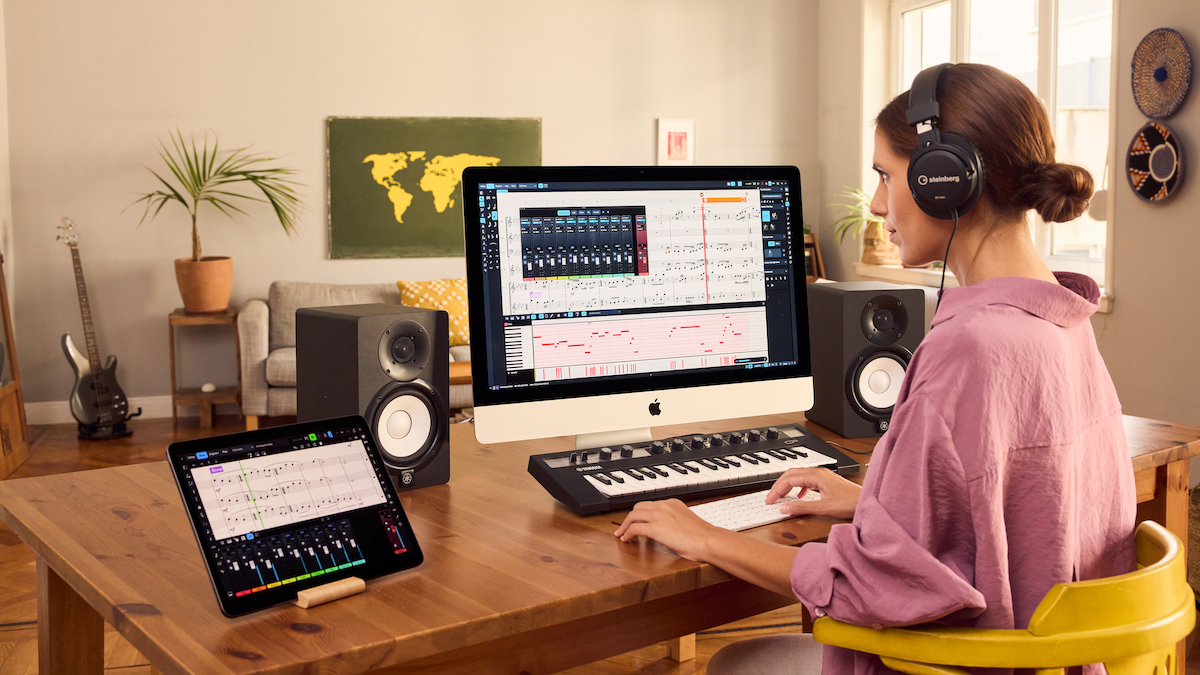
When time's a ticking, the best music notation software will help you to get the job done fast. You know the, ahem, score – nothing in life is more fleeting than a good creative idea. So, when inspiration strikes you need to move quickly before you lose focus for good.
A good piece of notation software will help you to do just that. A bad piece of software will just end up getting in the way, frustrating your creativity.
If you're a student, you won't want those assignments to drag, so invest in the best music notation software you can. It's a similar story for teachers, composers, musical directors, arrangers, engravers – there's simply never enough time. If you are a pro, we recommend you invest in a sophisticated notation package, one that can handle complex musical forms, everything from orchestral to jazz.
When you learn that famous composers, such as Paul McCartney, can't read music it begs the question: do I need notation software at all? In short, yes. Notation software is an awesome learning tool if you're just starting out.
Secondly, two of the fastest growing areas in the industry are music for TV and films, and music for gaming. If you want a career in either of these then using notation software is a prerequisite.
So, which are the best music notation software packages right now? Let's dive in. Not sure if you need this type of software? Scroll to the bottom of the page for our comprehensive buying advice.
Best music notation software: Our top picks
Whether you're a student or seasoned pro, it's impossible to ignore Avid Sibelius. Its comprehensive feature set has been fine-tuned over decades of development, with Avid's current team doing a fine job of tempering all that power with a fast, efficient workflow.
Its recently introduced iOS app integrates seamlessly with the desktop versions, enabling you to work freely anywhere, from a hectic filmset location to your favourite quiet place in nature. No wonder it's one of the most widely used packages in the industry.
Sibelius isn’t for everyone, however – partly because of its steep pricing. PreSonus Notion 6 lacks Sibelius' heritage, but it does offer much of the functionality for a fraction of the price. It too boasts a mobile app, this time with handwriting recognition. With its user-friendly feature-set, and samples recorded by the London Symphony Orchestra at Abbey Road Studios, it's stunning value at just $149/£128.
Best music notation software: Product guide
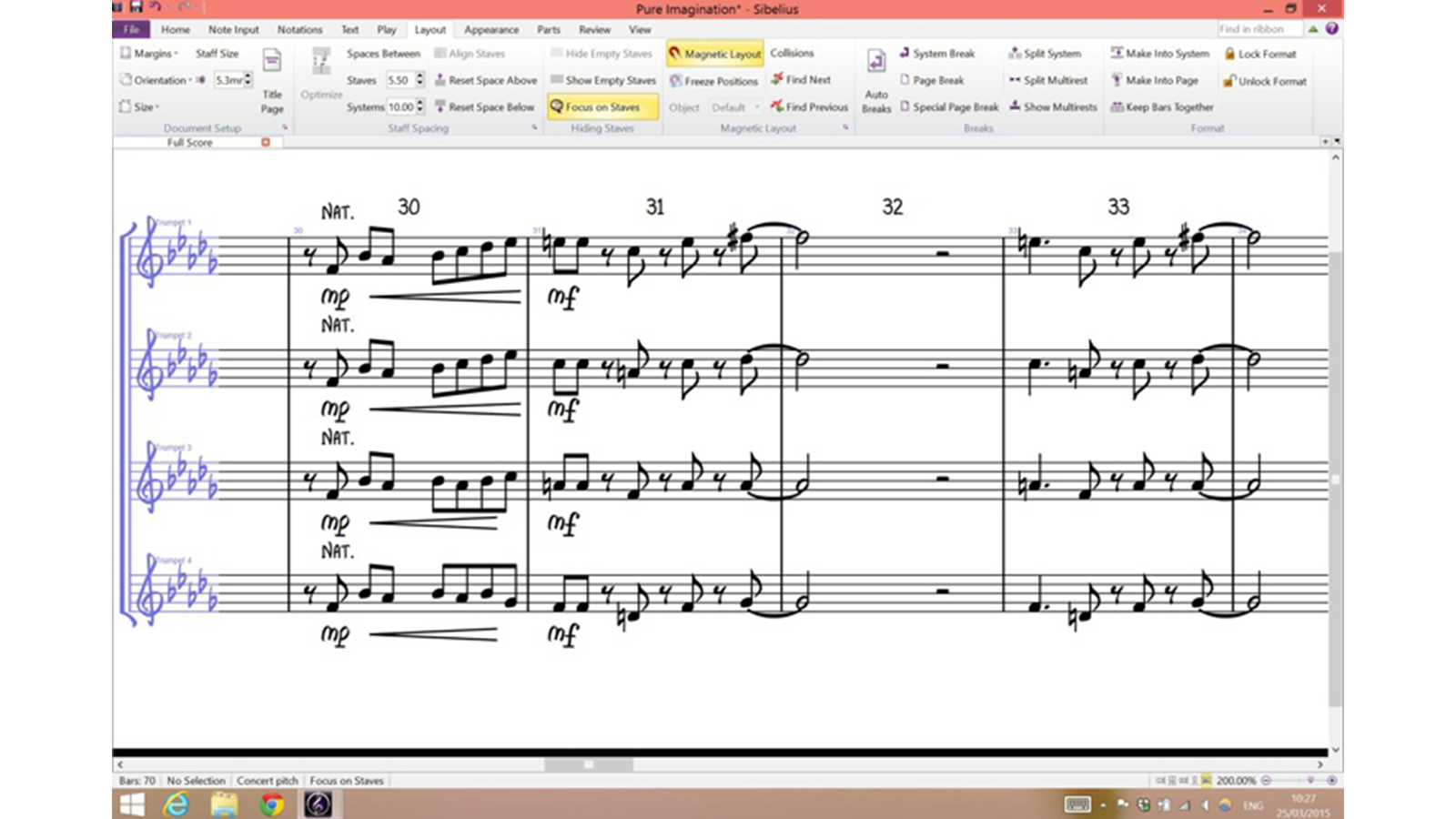
1. Avid Sibelius
Our expert review:
Specifications
Reasons to buy
Reasons to avoid
Sibelius has a massive following, and for good reason. It's been developed, over almost 30 years, to be an absolute powerhouse for professional composers, arrangers, engravers and educators. What's more, it's been owned by Avid since 2006, the company behind Pro Tools and Media Composer.
Fortunately, despite its pro leanings, Sibelius has always remained accessible to use. In fact, Avid markets three versions in order to satisfy everyone from novice to expert. Sibelius|First enables hobbyists to write simple scores and is completely free to download and install. It's fun and easy to use but its four stave (instrument part) limit is, well, limiting.
The modestly priced standard version of Sibelius, named plainly as Sibelius, is just the ticket for many users. The stave limit has been upped to 16, it includes 10GB of sampled sounds, a comprehensive range of instruments, four voices per staff and a host of preset score layouts. Bundled with it are AudioScore lite and PhotoScore lite, software packages that enable you to automatically transcribe music from audio sources or scans.
Sibelius|Ultimate is, as the name suggests, the dog's danglies. Not only does it feature more – more samples, more instruments and so on – but it also gives you access to numerous esoteric features, such as the ability to use early music-style bar lines. Unfortunately, it also includes features that really should be included in the standard version, such as decent guitar tab tools, chord diagrams and the ability to loop playback.
All versions include the Sibelius iPad/iPhone app for free, but just be aware that a lot of its functionality needs to be unlocked with an in-app purchase.
Read the full Sibelius iOS app review

2. PreSonus Notion 6
Our expert review:
Specifications
Reasons to buy
Reasons to avoid
Notion is an extremely competitively priced notation program that doesn't hold back when it comes to functionality or quality.
Like most of the software here, you can easily create scores by playing an attached MIDI keyboard, or you can choose to use Notion's interactive keyboard, fretboard or keypad. MIDI and notation data can be viewed on the same staff, making it easy to edit a note's value, including velocity.
However, Notion also recognises handwriting on a Windows Tablet or iOS device, enabling you to create or edit with speed, whenever inspiration takes you, regardless of your location.
Notion's samples are outstanding. Orchestral samples are courtesy of the London Symphony Orchestra recorded at the legendary Abbey Road Studios, guitar samples are performed by Neil Zaza, bass samples by Victor Wooten and drum samples by Roy “Future Man” Wooten.
In fact, the samples are so good, and so tweakable, that PreSonus positions Notion 6 as a live performance tool too.
If you're a film or gaming composer you'll love Notion's synchronised video screen, as well as its ability to handle a large number of video file formats. It also integrates seamlessly with PreSonus' Studio One DAW.
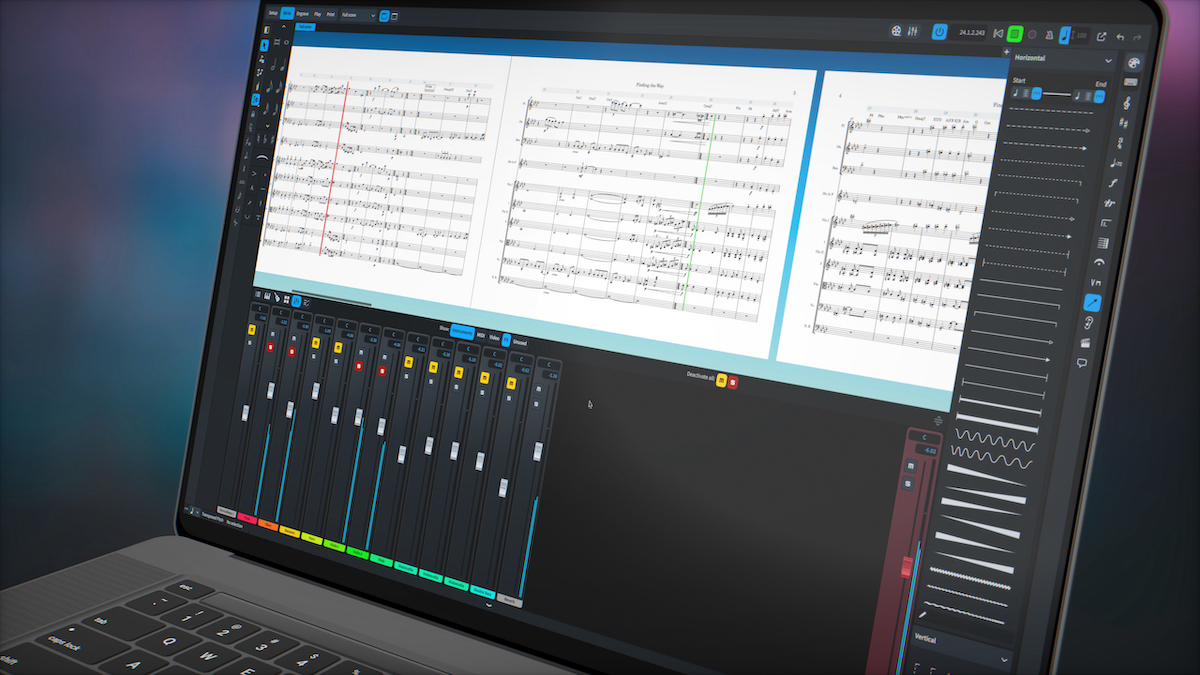
Specifications
Reasons to buy
Reasons to avoid
Launched just six years ago, Dorico is the new kid on the block, but it's one with an interesting backstory. About a decade ago, as part of a restructuring programme, Avid shut its UK office, and in doing so lost most of its Sibelius development team. Steinberg immediately snapped up the team to develop Dorico, which was launched a couple of years later.
As you'd expect, Dorico covers similar ground to Sibelius, but it has some new tricks up its sleeve. The interface is sleek, enabling composers, arrangers and students to take full advantage of its streamlined workflows. It's also both intuitive and responsive to use, automatically adjusting notation as you write it, and instantly reacting to changes in time signature, key or change of instrument.
The MIDI Key Editor, used in conjunction with standard notation, is a handy feature as is Smart MIDI import, which processes large orchestral pieces with aplomb. MIDI transcription is polyphonic, so different parts are separated into individual voices, just as they should be.
Like Sibelius, it ships in different versions to suit a variety of skill levels and budgets. Dorico SE is the limited free version, Dorico Elements will keep most of us happy, while Dorico Pro is the comprehensive 'you'll want for nothing' version. Just like Sibelius, the Elements version is missing some useful features, but hey ho.
There's also an excellent, subscription-based iPad version that synchronises perfectly with the desktop versions and includes up to four staves for free.
Read the full Dorico 4 review
Read the full Dorico for iPad review

4. Apple Logic Pro X
Our expert review:
Specifications
Reasons to buy
Reasons to avoid
It's hardly a headline feature, in fact we suspect many Logic users don't even realise it exists, but Logic Pro X has a surprisingly capable score editor. It enables you to view, create and edit MIDI regions in software instrument tracks as music notation.
Play any MIDI instrument and Logic will create a score that can be tweaked to your heart's content. You can add additional notes, dynamics, phrase markings, lyrics and text. A variety of staff styles can be selected, and even customised, to control the display of rests, stems, ties, beams and so on.
Instruments can be grouped into score sets, so that you can produce full scores, parts and lead sheets. It's also possible to create and edit chord grids for guitars and other instruments, using standard or open tunings.
Visual quantization can control the display of note values while retaining the original timing of your recordings, and you can change the displayed musical key without altering the playback of your MIDI recordings.
We accept that it's not as powerful as some of the pro-level software here, but considering the price, and the fact that you get a terrific DAW thrown in for free, it's stonking value. If you're an Apple user looking to buy both a DAW and some notation software you may find that Logic Pro X on its own is a very cost-effective solution.
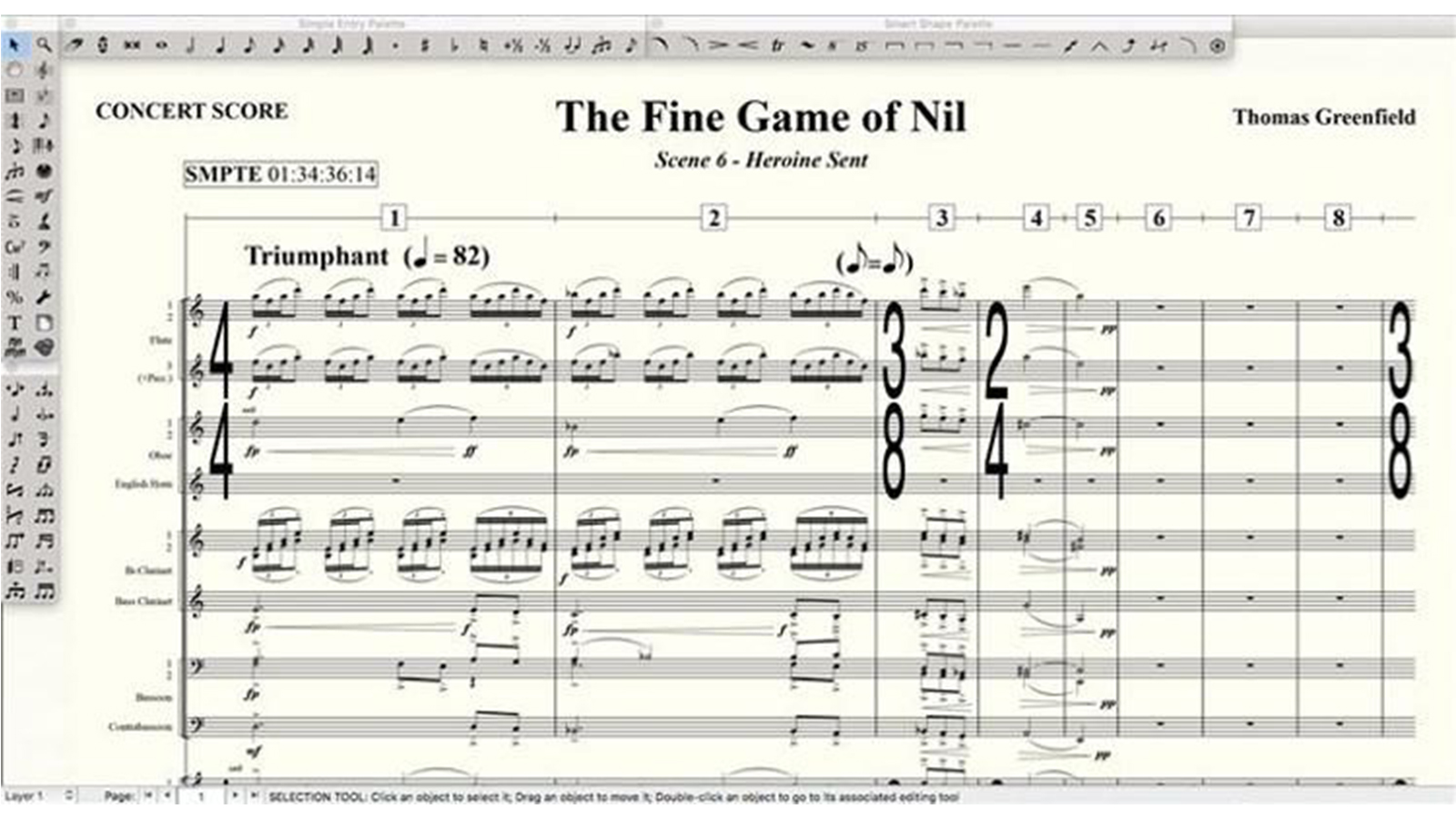
5. MakeMusic Finale
Our expert review:
Specifications
Reasons to buy
Reasons to avoid
Finale is another veteran notation application that became an industry favourite decades ago. Launched in 1988 it's now on version 27!
Over the years it's become a hugely accomplished piece of software that will let you notate anything from a straightforward lead sheet to a complex orchestral composition. Despite having a manual that makes War And Peace look like a quick read, it's well-loved for its flexible workflow and ease of editing.
Recently, MakeMusic has bolstered Finale's sharing capabilities, so it's now easy to collaborate with other Finale users or share compositions via MusicXML with anyone.
Finale is available in three different versions. MakeMusic has generously provided the free Finale Notepad with eight staves, twice that of most of its competitors. Notes can be entered manually, via MIDI or imported using MusicXML files.
Finale PrintMusic adds a lot more functionality, including comprehensive editing tools and sharing.
Finally, the full-fat version of Finale is about as powerful as it gets.
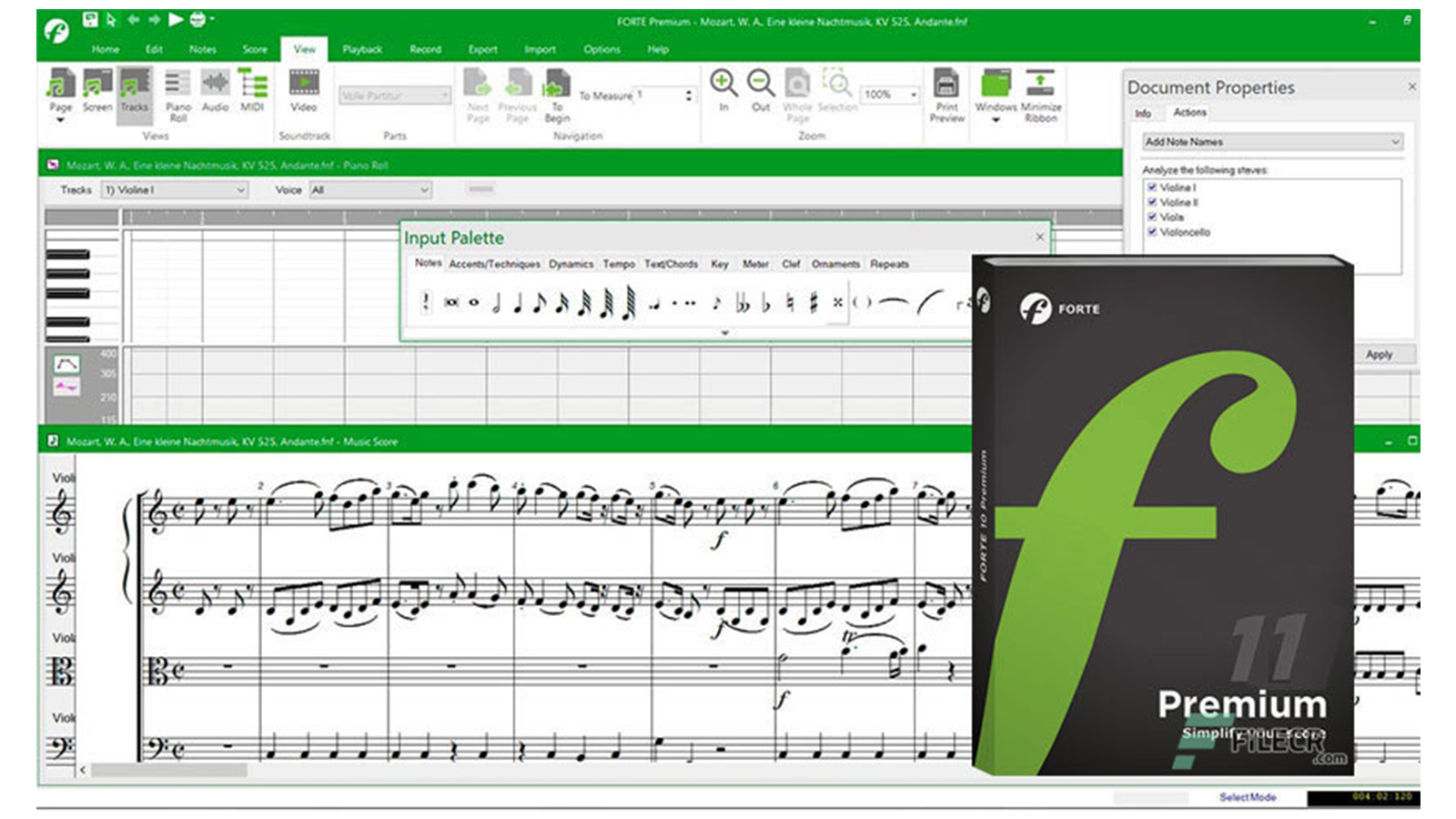
6. Forte Notation Forte 12
Our expert review:
Specifications
Reasons to buy
Reasons to avoid
Forte is aimed at the hobby musician or pros on a tight budget. It offers less than most of the packages here, but that may still be enough for some musicians. It also costs less too – mostly.
In Premium guise, you do get up to 32 staves, each of which can feature 8 voices. You can MIDI record, input and edit your score by mouse, as well as importing and exporting via XML.
Forte Premium also includes ScanScore 2, which makes it easy to scan and transcribe existing scores. Forte 12 Home Edition and Forte 12 Basic lack this functionality and the number of staves is slashed to 16 and 4 respectively.
Forte is a good product with a loyal following. However, you need to consider whether the Premium version really does offer value when compared with mid-tier products from other brands that are cheaper, have more functionality and offer an upgrade path. Similarly, Forte Basic appears inexpensive, but it offers little more than many of the free packages from the likes of Avid and Steinberg.
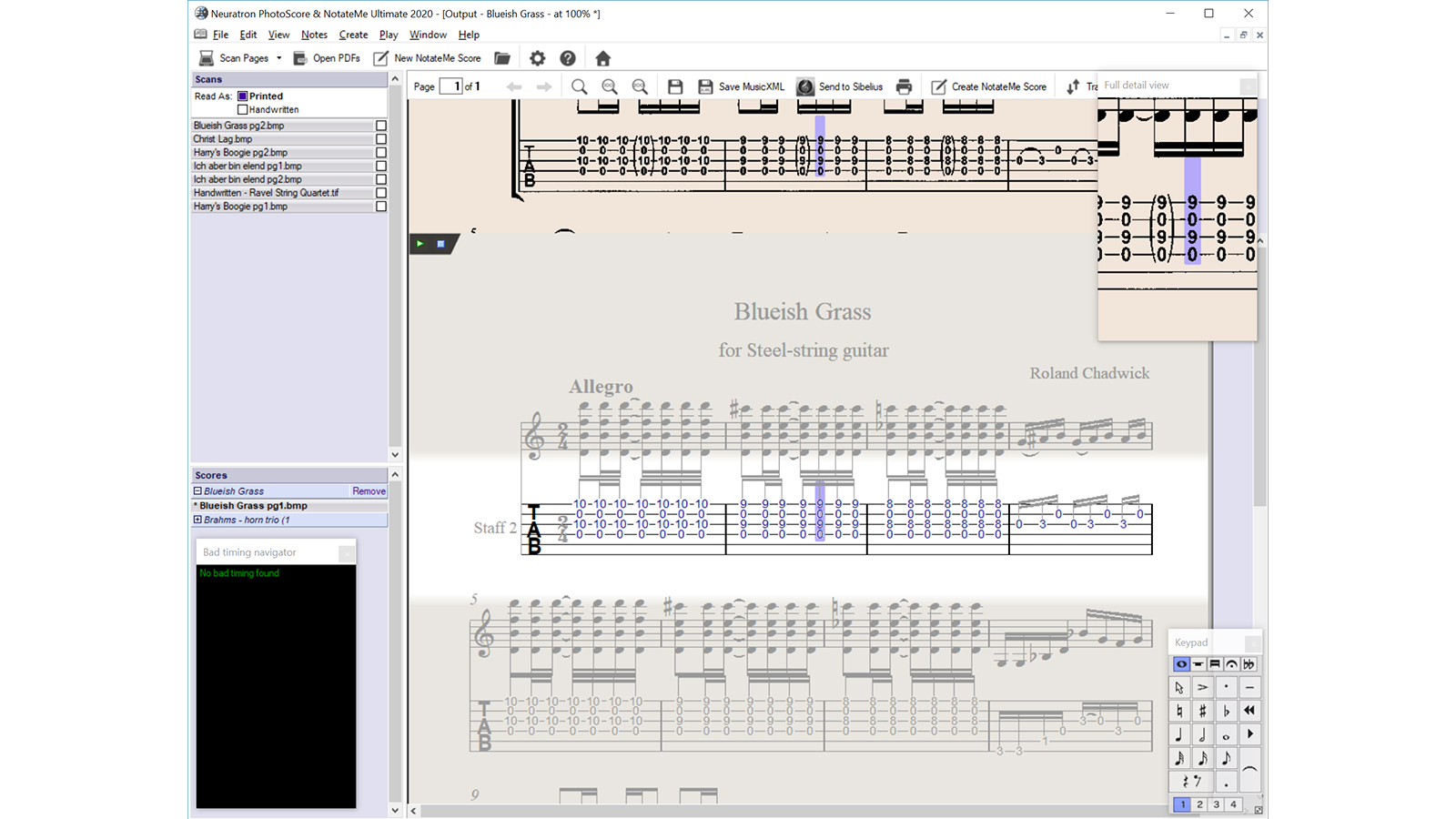
7. Neuratron PhotoScore Ultimate
Our expert review:
Specifications
Reasons to buy
Reasons to avoid
PhotoScore only does one thing, but it does it supremely well. It enables you to convert scans or pdfs of sheet music into editable notation files. These files can then be exported to other applications, such as Sibelius, Finale and Dorico for further editing and processing.
It will read pretty much everything you throw at it – 64 staves per page, four voices per stave, guitar chords, 4- and 6-string guitar tabs, lyrics, the list goes on…
Bundled with PhotoScore is NotateMe, which notates handwritten scores.
If you need to transpose a written part, add accompaniment to a piece or simply fancy swapping instrument parts around for fun then PhotoScore is a real timesaver.
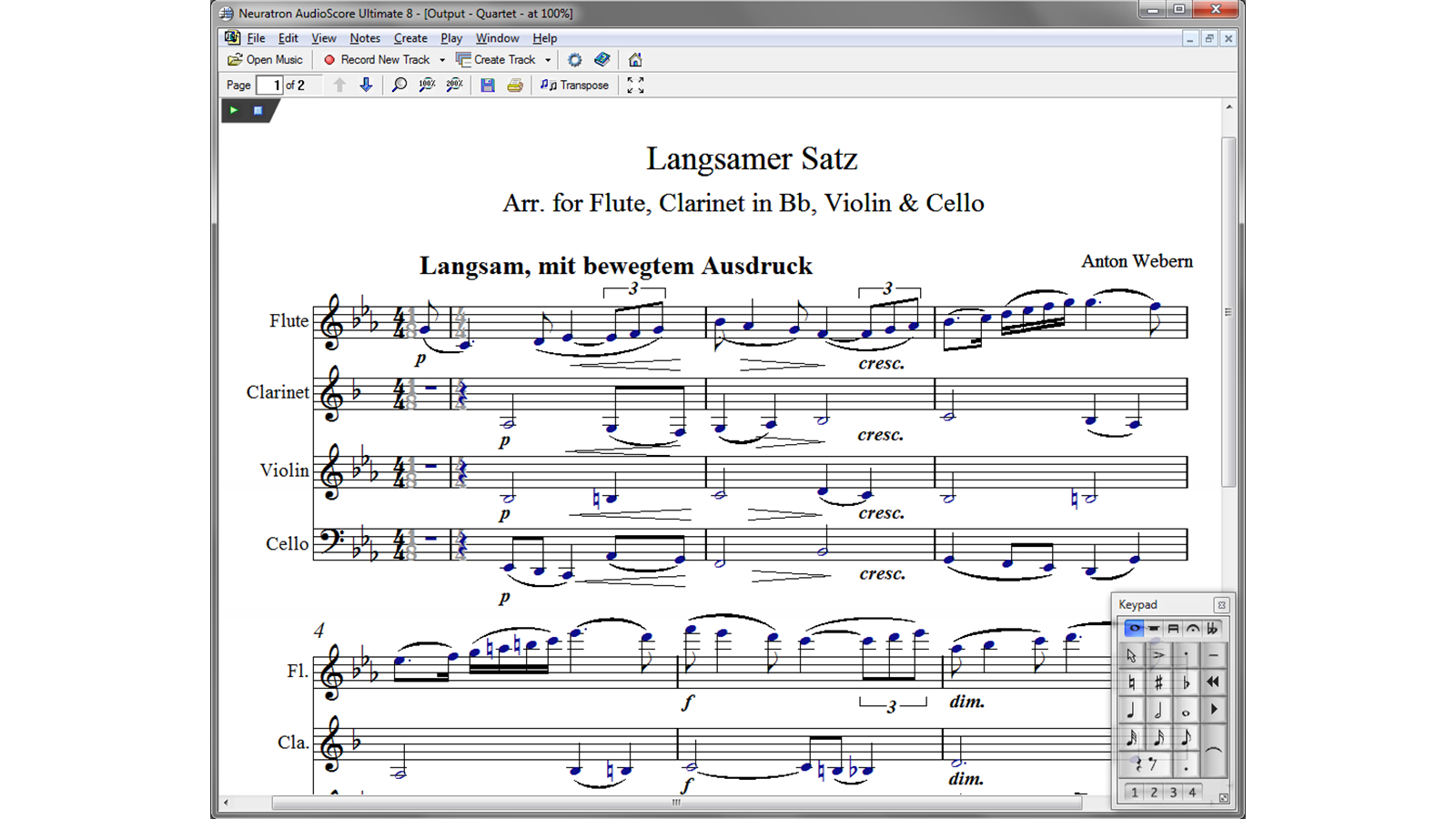
8. Neuratron AudioScore Ultimate
Our expert review:
Specifications
Reasons to buy
Reasons to avoid
It could be argued that AudioScore is more of a utility than a notation application. Like its sibling PhotoScore, it does just the one thing, but this time it's the creation of scores from MP3s and CDs.
Feed it a track and it'll spurt out an editable score on your computer. AudioScore recognises a gamut of musical styles from chamber music to jazz, with excellent instrument separation. Key signatures are accurately represented, pitches from F0 to C8 are notated, and it can discern notes and rests as short as 32nd notes.
Like PhotoScore, AudioScore is great fun, but if you're a musical director of a theatre or a teacher we can see it being invaluable.
Best music notation software: Buying advice
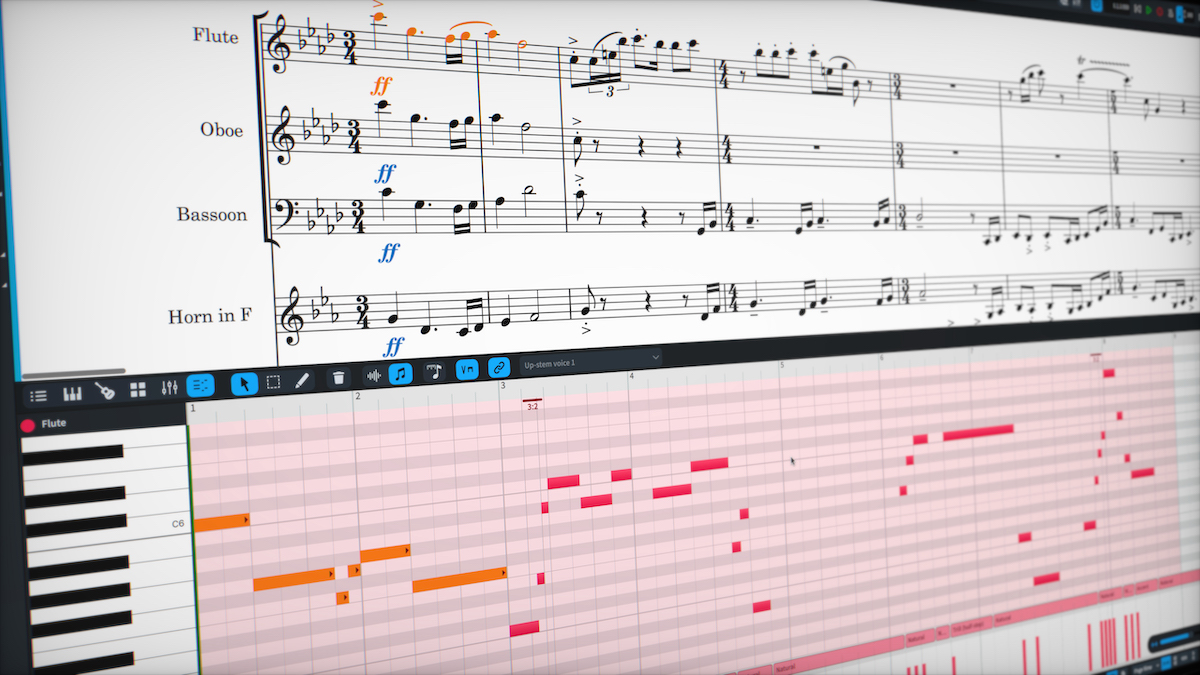
Will music notation software improve my workflow?
MusicRadar's got your back
Notating can be a painful process because, more often than not, your creative mind is zipping along faster than you can get your ideas down.
When you're in the flow, nothing should come between you and your artistic vision, and that includes software. Even the implementation of simple things, like the number of keystrokes or mouse moves it takes to accurately position a note on a staff, can find you ripping handfuls of your hair out. So, we strongly advise you to choose software with efficient, refined editing tools and, if possible, assignable custom keystrokes.
Diving a little deeper, all of the packages featured in this best music notation software guide will impose a certain way of working on you. Some are more prescriptive, while others are more flexible. None are better or worse, just different. We recommend spending a little time discovering whether a particular workflow, or set of workflows, gels with your way of working.
For example, the implementation of magnetic staves in one package may seem completely intuitive to some users, while driving others nuts.
Which version is right for me?
Many of these software notation packages are marketed as a triumvirate. There's usually a free version, a reasonably priced version and a 'stone me, how much?' version. What gives?
Usually, the free version is severely limited but may still be fine for hobbyists. The main limitation will be the number of instrument parts or staves available to you – usually four.
The mid-level will be fine for many advanced hobbyists and semi-professionals. For example, the standard version of Sibelius gives you 16 staves to notate on, and much of the program's functionality is unlocked.
Top-level software typically features unlimited staves and extensive capabilities. Most of the software at this level is built using a plug-in architecture, so any gaps in functionality can be plugged with a specialist plugin. It's at this level that developers usually unlock powerful customisation tools too, enabling you to set up faster workflows and generally fine-tune the program to your way of working.
Annoyingly, in our experience, a few essential features that really deserve to be found at the mid-level are only available in the premium packages. Decent guitar tab and chord box implementation are common examples. The strategy behind this is obvious, but it does little to endear these brands to their customers.

What specialist features are on offer?
If you're composing for film or gaming, then a dedicated synchronised video window is essential. Make sure it displays timecode and is compatible with a wide range of video formats.
If you make your living as an engraver, you'll be delighted to learn that many of these packages can produce really beautiful-looking scores. Just be aware that some software allows for a finer level of control than others.
Ins and outs
Placing notes on the staff is, of course, always just a mouse-click away but there are other ways of creating notation. Most, if not all, of the notation software we have featured in this guide is MIDI compatible. Plug in a MIDI keyboard and, as you play, notation is created on the fly.
Mobile and iPad apps enable you to create and edit notation with just the touch of a finger, some will even recognise handwriting.
The Covid pandemic has proven just how important it is for everyone in the industry, from musicians to composers, through educators and students, to be able to collaborate remotely. Look out for export and sharing features such as MIDI export, audio export, .sib creation, pdf export and MusicXML import/export.
Some software notation packages make it easy to promote your music too. Often you'll be able to export to platforms such as ScoreExchange, or share to YouTube, Facebook and SoundCloud with just a few clicks of your mouse or a swipe of your finger.
Find out more about how we test music gear and services at MusicRadar.
Related buyer's guides
Want all the hottest music and gear news, reviews, deals, features and more, direct to your inbox? Sign up here.
When Simon's childhood classical guitar teacher boasted he 'enjoyed a challenge', the poor man had no idea how much he'd underestimated the scale of the task ahead. Despite Simon's lack of talent, the experience did spark a lifelong passion for music. His classical guitar was discarded for an electric, then a room full of electrics before Simon discovered the joys of keys. Against all odds, Simon somehow managed to blag a career as a fashion journalist, but he's now more suitably employed writing for MusicRadar and Guitar World. When not writing or playing, he can be found terrifying himself on his mountain bike.
